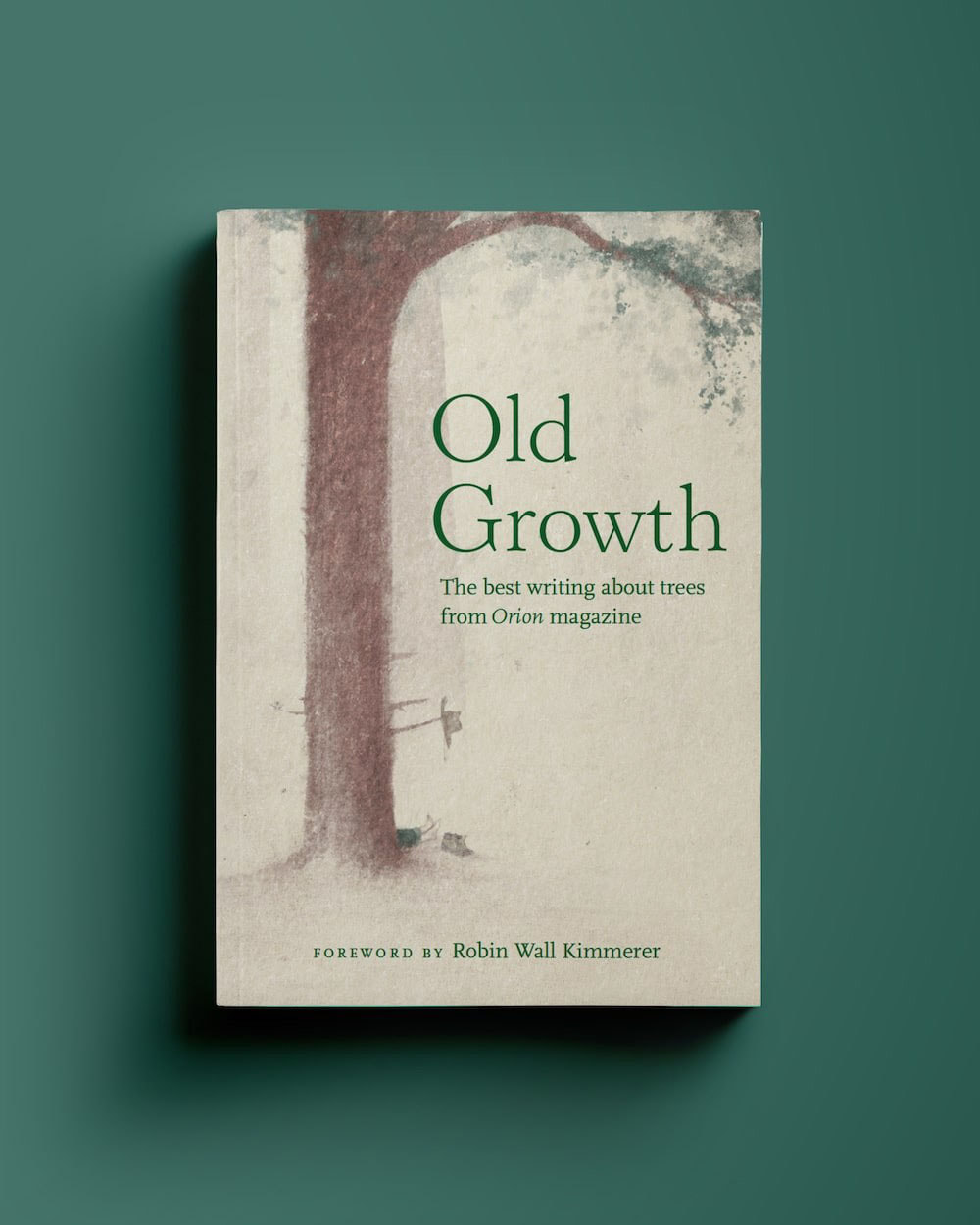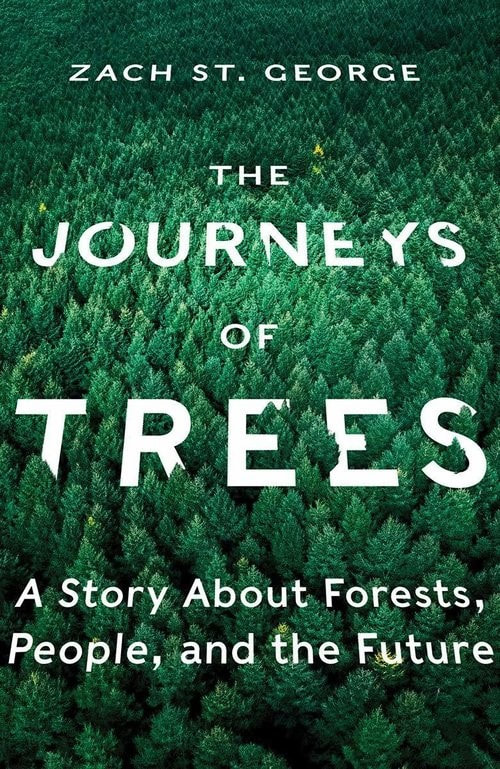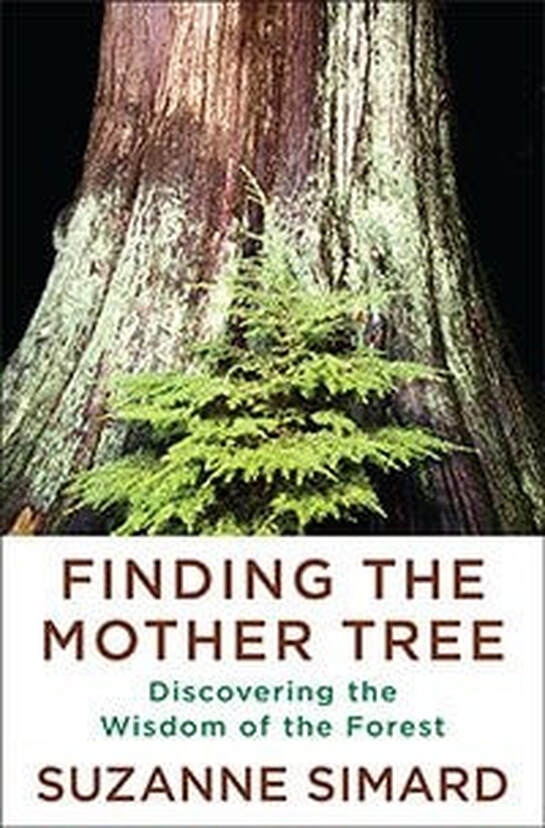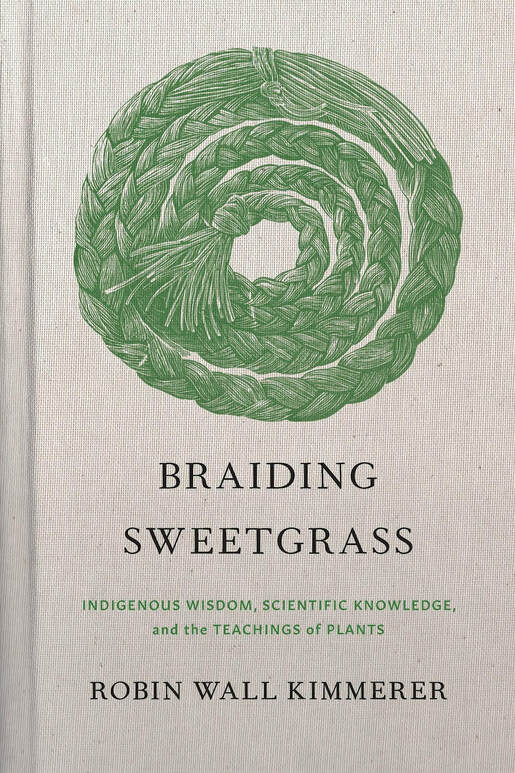BOOK REVIEWS -Suggested Reading
KWOA has started a series of suggested titles for fiction and non-fiction books that may be of interest to members. If you have a favorite book related to forestry please send the title to [email protected]. You are also encouraged to submit a review of it. If you have read any of the on-line book reviews, we’d love to hear what you thought about them.
KWOA has started a series of suggested titles for fiction and non-fiction books that may be of interest to members. If you have a favorite book related to forestry please send the title to [email protected]. You are also encouraged to submit a review of it. If you have read any of the on-line book reviews, we’d love to hear what you thought about them.
|
The Nature of Oaks: The Rich Ecology of Our Most Essential Native Trees
by Douglas W. Tallamy, Timber Press, Portland, Oregon, 2021 Whether you are thinking of planting a yard tree, or afforesting an old field, this book will help guide you to making good decisions on what kinds of trees to plant. Dr. Tallamy, a professor of entomology, makes a passionate argument for the ecosystem services that oaks provide, and offers a number of fun facts about the role oaks play in hosting a huge number of insects that in turn provide essential food and habitat for birds and sequester huge amounts of carbon to boot. Dr. Tallamy focuses on a single white oak he germinated from an acorn then planted in an old hay field by his home in October and takes us through the intertwined lives of the insects, birds, fungi and microorganisms that he observes engaging in mutually beneficial relationships with the oak throughout an entire year. Fun facts include: why do so many species in the Fagaceae family retain their leaves throughout the winter (marcescence), how did the month of April get its name, why do birds migrate north in May, why do oaks have such variance in leaf form, why do oaks make good street and yard trees, how does acorn size and shape influence their distribution by different animals and birds? A slender book of 197 pages including two appendices with information on the right oak species to plant in different geographical locations, a list of oak species native to North America, and “how to plant an oak,” Tallamy writes a moving paean to one of the world’s oldest living genuses (60 million years) with a huge geographic range. Excellent photos of mutualistic insects that depend on oaks well illustrate his point that Quercus hosts more than 500 caterpillar species (important food for birds) throughout the year (even in winter!), 100 species more than its closest rival, the cherry. In comparison, maples support 259 species of caterpillars, and Callery pear (uggh!) only one. He gently and artfully weaves a complex tale of the ecosystem roles oaks play and why, concluding “. . . that model of mutual exclusion has failed us dismally. . . we must construct ecosystems that contain all their functional parts right where humans abound.” Although I have heard the competition between plants and insects described as “an arms race” in which every species evolves to overcome the defenses and offenses another develops, Tallamy tells us why and how these adaptations occur and how they benefit our world. Given the attention being paid lately to “the oak bottleneck,” this book provides a compelling argument to learning more about the hows and whys of nurturing oak, in a time where insect and bird populations are crashing. Highly recommended. Submitted by Mike Rich |
|
Old Growth
The best writing about trees from Orion magazine 2021. Orion magazine, Northampton, MA, 2021, 215 pages Book review submitted by Karen Marshall Old Growth balances science and metaphor in its stories and poems written from the perspectives of humans and of trees about how both can evolve. The book’s subtitle – The best writing about trees from Orion magazine – backs the claim with articles and poems since 1982 by a trove of heavy-hitters in the conservation and preservation fields as well as authors new to many of us. Basic scientific explanations alternate with poignant and personal stories that will send the reader looking for more (and there’s much more) in the authors words and deeds. Old Growth explores competing scenarios and theories on forest management, or its absence. Do we continue to try to preserve endangered species by the captive breeding of “conservation-reliant species” (p. 131) when their natural habitats have been destroyed – “an ark with no gangplank” (p. 191) as one author expressed it? Do we follow a policy of nonintervention in pristine areas that will still evolve in unpredictable ways? Or do we practice “assisted migration” that has its own perils for the new habitat by the introduction of non-native species and the unknowns of climate change even with the best of intentions. All of the above can also be used to justify continued destruction of existing habitat. [sidebar/textbox]: “The more we destroy the forests, the more we turn into separatists, strangers in our own home. We lose our way, because an age where all things are expendable makes it increasingly hard to identify what it is we need. You cannot follow trees if they are not in you, but only in your way.” [bold added] The Autumn Trees, pp. 91-92. A final contention in the book is that ecological restoration must not focus on a gilded landscape based on a more or less stable point in the past (To Take Wilderness in Hand (pp. 202-203)). Instead, conservationists need to husband conditions such as fires, floods and behaviors that change clogged or absent natural processes. In her Foreword to the collection Robin Wall Kimmerer describes the book as essays “of interspecies relationships of an arboreal kind” that “embody the idea that it is not enough to eulogize the nearly lost; we must try to bring them back”. |
|
W. W. Norton & Company
|
The Journeys of Trees: A Story about Forests, People, and the Future
By Zach St. George W. W. Norton & Company, 2020, 253 pages Book review submitted by Karen Marshall The Journeys of Trees explores the concept of forest migration, the people who study it and those who are attempting to assist it. St. George explains how any time a tree dies or a new one sprouts, the forest that includes it shifts a little. When new trees sprout in the same direction, the whole forest begins to migrate. As factors such as climate change, fires and drought become increasingly influential, forests that move north either geographically or in elevation tend to become more abundant in those ranges. Zach St. George is a science and travel writer. He explores the evolving movements of forests by focusing on five species of trees in the US: giant sequoia, black spruce, Florida torreya, Monterey pine and ash in his chapter entitled Kiss Your Ash Goodbye. He also explores the backcrossing of the American chestnut in New Hampshire. [sidebar/text box] “Even in cases where people can repair the tree, the ecosystem that it was a part of will be gone, rearranged in its absence.” (page 145) St. George cautions that assisted migration can also bring insects and diseases with the introduced tree species who also become invasives themselves. These threats are then addressed by remedies such as biological control and CRISPR gene-editing that St. George thinks may be short-term and narrow in scope. [sidebar/text box] “There are few forests anywhere in the world that scientists have tracked for more than a century.” (page 157) |
|
Barkskins
By Annie Proulx 4th Estate, London, 2016 Book review submitted by C. Michael Rich, KWOA board member This novel spans the years 1693-2013 and follows a peripatetic and ambitious group of people from Europe to New France, Nova Scotia, New England, Hong Kong, the Lake States, New Zealand and Brazil. No matter how engrossing, tragic and convoluted their lives, wherever they are the forest stands out as the main character of the story. Two indentured servants from France with very different characters form the backbone of the novel, and their progeny diverge and meet again in a parable comparing European and Native American attitudes towards nature. Their master, Trepagny, a Cathar heretic and veteran of the religious wars in Europe, lectures Rene Sel, a stolid worker from rural France, saying “Someday . . . men will grow cabbages here. To be a man is to clear the forest. I don’t see the trees . . . I see the cabbages. I see the vineyards.” Sel, hard-working and simple, marries a woman from the local Wobik people. It is her culture and teaching that live on through their descendants who eventually settle in Nova Scotia and Maine with Mik’maw kinsfolk. |
Relegated to second class citizenry because of their native ancestry, Sel’s descendants exist on the periphery of warring bands of timber rustlers, but eventually find success in the axe industry.
Charles Duquet, the other bondsman, grew up a street urchin in Paris, and knows that only cold calculation and exploitation of others’ weaknesses will get him ahead. He escapes Trepagny’s servitude to work for an English trader who runs guns for the Iroquois. Utterly unscrupulous, he builds a business empire that eventually becomes a major timber company based in Boston that exploits virgin timberlands worldwide.
The lives and deaths of the Sel and Duquet descendants pale in comparison to Proulx’s evocation of the world’s forests. “Salt of the earth” Sel and the insatiably ambitious Duquet (later anglicized to “Duke”) represent the human values that can both heal the earth and destroy it. At the conclusion of the book, one of Sel’s descendants cries out “The forests, the trees, they can change everything!”
National Geographic produced eight television episodes based on the early chapters of the book. Gorgeously filmed in Quebec, viewing it enriched my reading. No review can do justice to the complexity and depth of this novel. Proulx’s extensive research and eloquent writing amply reward the reader.
Charles Duquet, the other bondsman, grew up a street urchin in Paris, and knows that only cold calculation and exploitation of others’ weaknesses will get him ahead. He escapes Trepagny’s servitude to work for an English trader who runs guns for the Iroquois. Utterly unscrupulous, he builds a business empire that eventually becomes a major timber company based in Boston that exploits virgin timberlands worldwide.
The lives and deaths of the Sel and Duquet descendants pale in comparison to Proulx’s evocation of the world’s forests. “Salt of the earth” Sel and the insatiably ambitious Duquet (later anglicized to “Duke”) represent the human values that can both heal the earth and destroy it. At the conclusion of the book, one of Sel’s descendants cries out “The forests, the trees, they can change everything!”
National Geographic produced eight television episodes based on the early chapters of the book. Gorgeously filmed in Quebec, viewing it enriched my reading. No review can do justice to the complexity and depth of this novel. Proulx’s extensive research and eloquent writing amply reward the reader.
|
Finding the Mother Tree
Discovering the Wisdom of the Forest By Suzanne Simard Alfred A. Knopf, New York, 2021 Suzanne Simard was born in British Columbia and was educated at the University of British Columbia and Oregon State University. She is a professor of forest ecology at the University of British Columbia’s Faculty of Forestry and leader of the Mother Tree Project there. Book review submitted by Karen Marshall Finding the Mother Tree is about striking a balance – whether in nature or one’s professional and personal life. Dr. Suzanne Simard unflinchingly narrates her struggle between the conflicting demands of scientist, instructor and mentor in a male-dominated forestry industry and commitments to family and friends. Simard’s passionate interest in all things forest began as a member of generations of horse-loggers in western Canada who managed to make a living with a “lighter touch” from which “the land mended itself when left to its own devices” (p. 4). The premise of her book is not about how we can save the trees but “about how the trees might save us.” (p. 6). |
Her initial trial as a government tree scientist in British Columbia landed her in the middle of the logging practice of exterminating birches and broadleaf trees in favor of higher-value Douglas firs. Simard found that birches actually provide nutrients to firs through the mycorrhizal network (remember that term) belowground.
Her accounting of the mind-numbing logistics of conducting a well-designed and executed field experiment over thousands of plots and many years is a cautionary tale to the generally accepted laboratory experiments to achieve the same results. It is no wonder that many scientists prefer a laboratory environment to enduring lengthy commuters to field sites on bad roads or only trails, biting insects (did I mention bears?), intense heat and humidity, limited supplies of power and unexpected weather events. But Simard contends that between those settings is the difference is in perceiving what trees in their natural setting have to tell us beyond the parameters of proving a specific theory. And they have a lot to say to those who are listening. “Turning to the intelligence of nature itself is the key.” (p. 305).
Returning to that biological neural network underground— Simard’s research results confirmed that trees exist not as individuals but in communities. She identified what she named Mother Trees that act as a hub of nutrients shared by trees of different ages and species linked together via a vast underground fungal network. Rather than competing, diverse species collaborate in a more stable and resilient system that also leads to greater productivity. Her field work also showed that injury to Mother-Tree seedlings induced them to transfer even more carbon to their kin (p. 287).
Simard posits that this adaptability has profound implications for the ability of forests to survive climate change. “The practical application – what this means for forest management – is that elders that survived climate changes in the past ought to be kept around because they can spread their seed into the disturbed areas and pass their genes and energy and resilience into the future.” (p. 288).
Simard’s findings have also directed her guidance for woodland owners and the timber industry in several ways:
In the Epilogue to her book Dr. Simard introduces The Mother Tree Project. It consists of nine experimental forests that span a 900-kilometer range across the “climate rainbow” in British Columbia. “We are examining the structures and functions of the forests – how webs of relationships play out in real environments and change with forest-cutting patterns that retain various numbers of Mother Trees and plantations that contain different tree-species mixtures. We want to make educated guesses about which combinations of harvesting and planting will be most resilient to the stresses our planet is facing, how the healthiest connections can thrive alongside our needs to use resources from the forest.” (p. 304) Read more… http://mothertreeproject.org
Her accounting of the mind-numbing logistics of conducting a well-designed and executed field experiment over thousands of plots and many years is a cautionary tale to the generally accepted laboratory experiments to achieve the same results. It is no wonder that many scientists prefer a laboratory environment to enduring lengthy commuters to field sites on bad roads or only trails, biting insects (did I mention bears?), intense heat and humidity, limited supplies of power and unexpected weather events. But Simard contends that between those settings is the difference is in perceiving what trees in their natural setting have to tell us beyond the parameters of proving a specific theory. And they have a lot to say to those who are listening. “Turning to the intelligence of nature itself is the key.” (p. 305).
Returning to that biological neural network underground— Simard’s research results confirmed that trees exist not as individuals but in communities. She identified what she named Mother Trees that act as a hub of nutrients shared by trees of different ages and species linked together via a vast underground fungal network. Rather than competing, diverse species collaborate in a more stable and resilient system that also leads to greater productivity. Her field work also showed that injury to Mother-Tree seedlings induced them to transfer even more carbon to their kin (p. 287).
Simard posits that this adaptability has profound implications for the ability of forests to survive climate change. “The practical application – what this means for forest management – is that elders that survived climate changes in the past ought to be kept around because they can spread their seed into the disturbed areas and pass their genes and energy and resilience into the future.” (p. 288).
Simard’s findings have also directed her guidance for woodland owners and the timber industry in several ways:
- Plant seedlings in clusters rather than rows
- Reinstate controlled burn practices
- Cease the practice of clear cutting
- Think twice about salvage harvesting dying Mother Trees; leave a portion behind to take care of the young
In the Epilogue to her book Dr. Simard introduces The Mother Tree Project. It consists of nine experimental forests that span a 900-kilometer range across the “climate rainbow” in British Columbia. “We are examining the structures and functions of the forests – how webs of relationships play out in real environments and change with forest-cutting patterns that retain various numbers of Mother Trees and plantations that contain different tree-species mixtures. We want to make educated guesses about which combinations of harvesting and planting will be most resilient to the stresses our planet is facing, how the healthiest connections can thrive alongside our needs to use resources from the forest.” (p. 304) Read more… http://mothertreeproject.org
|
Braiding Sweetgrass
Indigenous Wisdom, Scientific Knowledge, and the Teaching of Plants 2013, Text by Robin Wall Kimmerer and 2020, Introduction by Robin Wall Kimmerer 382 pages Milkweed Editions Submitted by Karen Marshall, KWOA editor Robin Wall Kimmerer draws on her personal, community, academic and professional experiences to braid indigenous teachings with scientific theory and practice that sometimes confirm each other, at other times conflict. Kimmerer is a mother, a scientist, decorated professor, and enrolled member of the Citizen Potawatomi Nation. She has served on the faculty of Transylvania College in Lexington and Centre College in Danville, Kentucky. Readers may note the common last name with the author of a previous Suggested Reading title in this series, Venerable Trees, The University Press of Kentucky, 2015. Robin has two daughters from an earlier marriage to Tom Kimmerer. Robin is currently a distinguished professor of environmental biology at the State University of New York, and the founder and director of the Center for Native Peoples and the Environment. The re-release of Kimmerer’s 2013 book is timely for many reasons. It falls in step with the renewed demands by minorities for reforms of approaches and institutions from law enforcement, LGBT recognition and the treatment of immigrants to the loneliness and vulnerability felt by almost everyone during the pandemic. At the same time there is exasperation with yet more protests and demonstrations that achieve few concrete results while perpetuating negative public images of these various sectors. |
Kimmerer includes environmentalists as one of those sectors that has garnered a public persona of negativism and often elitism. Her accounts of the history and present-day practices of many Native Americans acknowledge the environmental destruction and grief caused by capitalist values but poses a more hopeful alternative based on kinship, gratitude and reciprocity with nature.
In her Introduction for the 2020 re-release of her book, Kimmerer reminds us of the “lack of public awareness of the significance of plants to ecosystem function and the attendant deficiency in policy, scientific knowledge, and conservation funding that follows.” The cycle should flow “from attention, to gift, to gratitude, to reciprocity. It starts with seeing.” (p. xii) Her resulting vision questions the concept of land as property ownership and thus valued only for its natural resources and ecosystem services. Instead, she acknowledges the contribution of ecological restoration while extends beyond it to an ecological reciprocity of giving. “The universe is a communion of subjects, not a collection of objects.” (p. 55)
For woodland ‘owners’ (I now almost cringe at that word), if you read only one chapter, make it Old-Growth Children about the history and relationship of American natives to rain forests of the Pacific northwest. Indigenous peoples didn’t just subsist but thrived with harvesting methods of the Western Red Cedar for the many uses of its bark and even boards without killing the trees. Kimmerer acknowledges this focus in her own life in her introduction to the new release:, “…I take my guidance from forests, who teach us something about change… Braiding Sweetgrass, I hope, is part of that understory… so that when the canopy falls, as it surely will, a new world is already rising.” (p. xv)
In her Introduction for the 2020 re-release of her book, Kimmerer reminds us of the “lack of public awareness of the significance of plants to ecosystem function and the attendant deficiency in policy, scientific knowledge, and conservation funding that follows.” The cycle should flow “from attention, to gift, to gratitude, to reciprocity. It starts with seeing.” (p. xii) Her resulting vision questions the concept of land as property ownership and thus valued only for its natural resources and ecosystem services. Instead, she acknowledges the contribution of ecological restoration while extends beyond it to an ecological reciprocity of giving. “The universe is a communion of subjects, not a collection of objects.” (p. 55)
For woodland ‘owners’ (I now almost cringe at that word), if you read only one chapter, make it Old-Growth Children about the history and relationship of American natives to rain forests of the Pacific northwest. Indigenous peoples didn’t just subsist but thrived with harvesting methods of the Western Red Cedar for the many uses of its bark and even boards without killing the trees. Kimmerer acknowledges this focus in her own life in her introduction to the new release:, “…I take my guidance from forests, who teach us something about change… Braiding Sweetgrass, I hope, is part of that understory… so that when the canopy falls, as it surely will, a new world is already rising.” (p. xv)
PUBLICATIONS
GUIDES
Forest Landowners Guide to Tree Planting Success
Some information in this publication can help you protect emerging and desired seedlings that have naturally occurred. However, planting trees can accelerate the natural progression or succession from field to forest or enrich a newly regenerating forest with an uncommon species.
This Penn State Extension publication focuses on the values and methods of establishing wooded areas on rural property. It begins with suggestions to help analyze the planting site and select appropriate tree species, then provide guidelines for preparing the site and the planting process, and finally, offer advice on maintaining and supporting the seedlings as they mature.
For other articles on woodland management go to:
https://extension.psu.edu/forest-landowners-guide-to-tree-planting-success
Kentucky Logging BMP Field Guide
A field guide to the minimum requirements for logging
Best Management Practices in Kentucky
Kentucky Conservation Committee Guide to “Key Steps” for Climate Action
The guide highlights many great examples of work all across Kentucky to address climate impacts and steps you can take. See additional resources on the Kentucky Conservation Committee’s new Climate Action web pages.
Staying Safe During Wildfires
According to the Safety, Health & Consumer Council, one recent study showed that nearly 5 million homes in the U.S. are at a ‘high or extreme’ risk from wildfires.
Forest Landowners Guide to Tree Planting Success
Some information in this publication can help you protect emerging and desired seedlings that have naturally occurred. However, planting trees can accelerate the natural progression or succession from field to forest or enrich a newly regenerating forest with an uncommon species.
This Penn State Extension publication focuses on the values and methods of establishing wooded areas on rural property. It begins with suggestions to help analyze the planting site and select appropriate tree species, then provide guidelines for preparing the site and the planting process, and finally, offer advice on maintaining and supporting the seedlings as they mature.
For other articles on woodland management go to:
https://extension.psu.edu/forest-landowners-guide-to-tree-planting-success
Kentucky Logging BMP Field Guide
A field guide to the minimum requirements for logging
Best Management Practices in Kentucky
Kentucky Conservation Committee Guide to “Key Steps” for Climate Action
The guide highlights many great examples of work all across Kentucky to address climate impacts and steps you can take. See additional resources on the Kentucky Conservation Committee’s new Climate Action web pages.
Staying Safe During Wildfires
According to the Safety, Health & Consumer Council, one recent study showed that nearly 5 million homes in the U.S. are at a ‘high or extreme’ risk from wildfires.
The SHCC’s Guide to Staying Safe During Wildfires delivers essential strategies and tactics to keep you safe from wildfire — no matter where you live.
12 Wildlife Habitat Tips for Small Acreages
For woodland owners with smaller acreages (40 acres) who want to encourage wildlife, this publication from the University of Arkansas has helpful tips for planning, budgeting and executing practices to achieve their specific interests.
12 Wildlife Habitat Tips for Small Acreages
For woodland owners with smaller acreages (40 acres) who want to encourage wildlife, this publication from the University of Arkansas has helpful tips for planning, budgeting and executing practices to achieve their specific interests.






